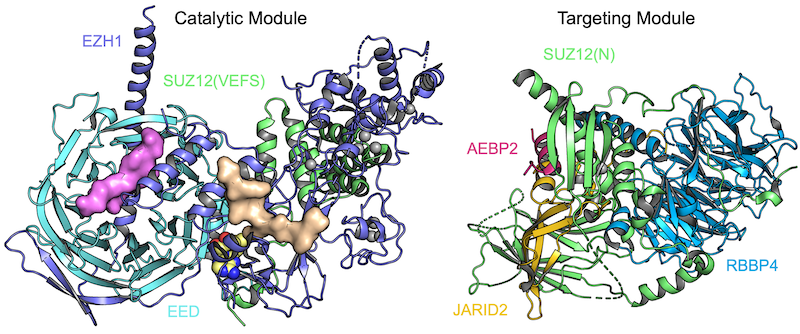
Stories

Xin Liu: Trial, Error, and Triumph
Xin Liu‘s science and math education began early. His parents would often quiz him with simple addition and subtraction questions, which Liu would happily work out by writing directly on the kitchen wall. Despite keeping an otherwise clean and tidy home, his parents were very tolerant of this creative use of wall space for problem-solving.
“Eventually, the wall became covered with numbers and symbols, and they were never erased. Looking back now, I see my parents’ actions as important encouragement for my learning during childhood. As I began school, my interest in mathematics extended to chemistry. In fact, two of my chemistry teachers from middle and high school had a profound influence on me when it came to experimental subjects,” remembers Liu.
Liu earned his undergraduate degree from Nanjing University in China and pursued graduate studies in biological chemistry at the University of Pennsylvania. As a second-year doctoral student under the guidance of thesis advisor Ronen Marmorstein, he had his first meaningful and comprehensive research experience. “My initial project involved deciphering the atomic structure of the cancer protein E7, encoded by the HPV virus, using X-ray crystallography,” said Liu. “HPV E7 promotes tumorigenesis—the initial formation of a tumor in the body—by inactivating the tumor suppressor protein RB. During this period as a novice researcher, I went through a significant amount of trial and error, accumulating valuable research experience and cultivating a rigorous research attitude, which laid a crucial foundation for tackling more challenging research topics in the future.”
With his Ph.D. in hand, Liu continued as a postdoctoral researcher in the laboratory of Nobel Laureate Roger Kornberg at Stanford University, where he studied the molecular basis of eukaryotic transcription initiation. In 2011, he then joined the faculty of University of Texas Southwestern Medical Center to establish his own lab focused on exploring the molecular and structural mechanisms of chromatin, epigenetics, and transcription in development and disease. As Liu was establishing his own research lab, Dr. Kornberg encouraged him to work on chromatin, noting that the field still has many mysteries to unravel.
In 2012, Liu became a Rita Allen Foundation Scholar. “With the support of the Rita Allen Foundation, I was able to pursue some of the most challenging research topics in the fields of transcription and chromatin and achieve significant results,” said Liu. “I am currently continuing to delve deep into and expand upon one of these topics. And there is no doubt that this award was crucial for me to achieve tenure in 2018.”
Currently, Liu is a professor at UT Southwestern Medical Center in the Cecil H. and Ida Green Center for Reproductive Biology Sciences, Department of Obstetrics and Gynecology and Department of Biophysics. “I have been fascinated by the importance of my research topics,” he said. “The process of how multicellular organisms, including humans, grow from a single-cell zygote into adults is a major scientific mystery.”
During development, Liu explains, various proteins that control the structure of our genetic material, known as chromatin regulators, play a crucial role. These regulators are responsible for ensuring that different types of cells develop correctly and maintain their identities by turning off genes that are not needed for a particular cell type. One important group of chromatin regulators is called Polycomb-group (PcG) proteins. First discovered in fruit flies (Drosophila), this regulator is found in many different species, showing their importance evolutionarily. These proteins form Polycomb repressive complexes (PRCs), which help shape the differential interpretation of genetic information across cell types.
Work from Liu’s lab group has yielded crucial structural insights into many facets of chromatin regulation, and he remains committed to gaining deeper insights into the intricate workings of PRCs.
“The current focus of my lab is on one type of these PRCs, PRC2, which adds a methyl chemical tag to histone H3 lysine 27 (H3K27). The result is a hallmark that a gene is silent or turned off. PRC2 is involved in fundamental biological processes such as stem cell differentiation, X-chromosome inactivation, and aging.”
